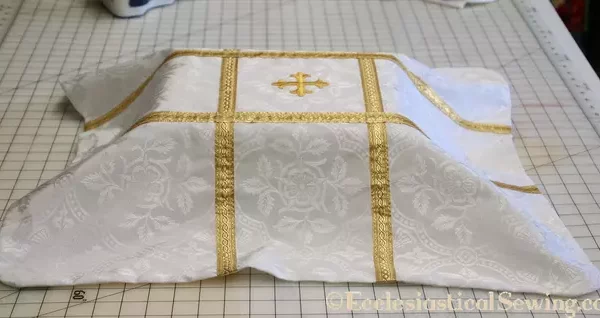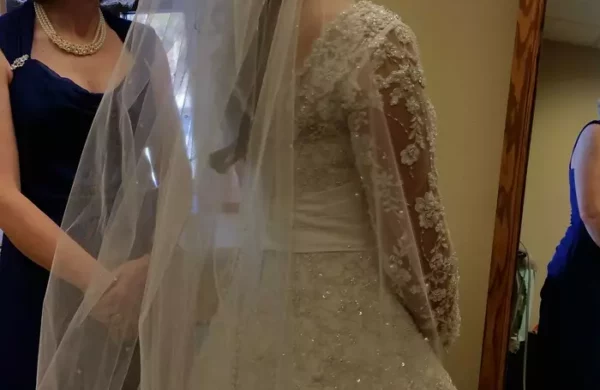
The tradition within the church is to use a Pall to cover the coffin for funerals. At the time of Pugin (early to mid-1800s), Palls were elaborate items, often embellished with extensive embroidery and gold work. Palls are still used today to cover a coffin during a funeral service. They are frequently white in color with a cross or other appropriate design applied. While churches may own a Pall for covering a coffin, they may not have a pall for covering an urn. The use of urns to replace large coffins is becoming more common.
Like this:
Like Loading...

Ecclesiastical Sewing would like to officially welcome Ashley Zerwas to our team. Ashley is Carrie’s only daughter and she has taken a full-time job working for the family business after recently graduating college. When the Ecclesiastical Sewing storefront opens, Ashley will be helping to run the business behind the scenes. Ashley will manage social media, as well as assist with product development and sourcing. Ashley will also take on the role of Editor in Chief for Ecclesiastical Sewing.
Like this:
Like Loading...
The Clergy presiding over the service wore matching cream-colored vestments with tapestry orphreys. Another clergy wore vestments such as surplices, dalmatic, tunic, and chasuble, according to their role and position within the church. Clergy robed in matching white chasubles lined the stairs to pay their last respects as the flag-draped coffin left the Cathedral
Like this:
Like Loading...
Happy New Year from Ecclesiastical Sewing! After a busy month of home remodeling and wedding preparations, the workroom turned into a wedding hub. From groomsmen alterations to bridesmaid dresses and vintage veil restyling, it was a flurry of activity. The remodeled space is now organized and lovely!
Like this:
Like Loading...



You must be logged in to post a comment.